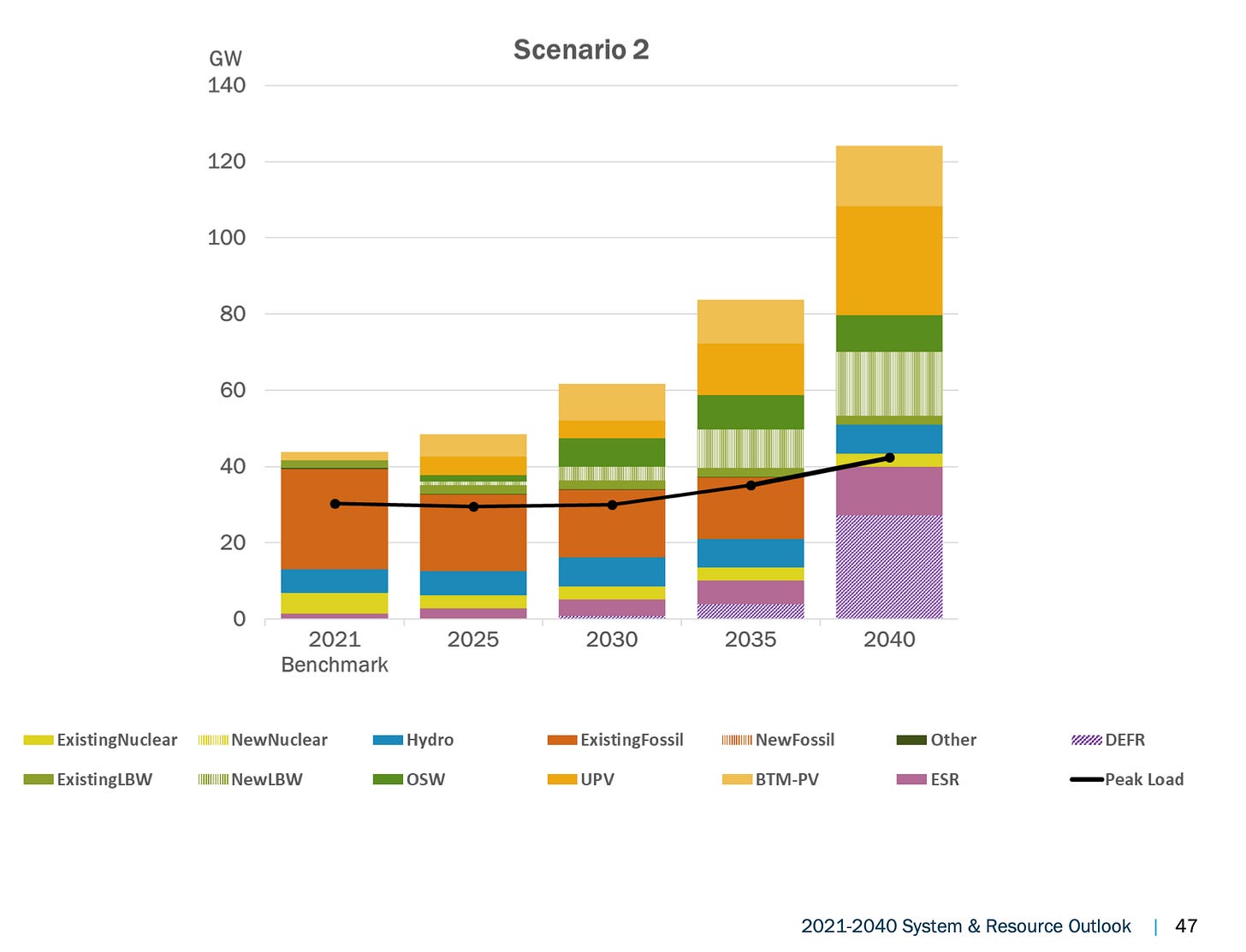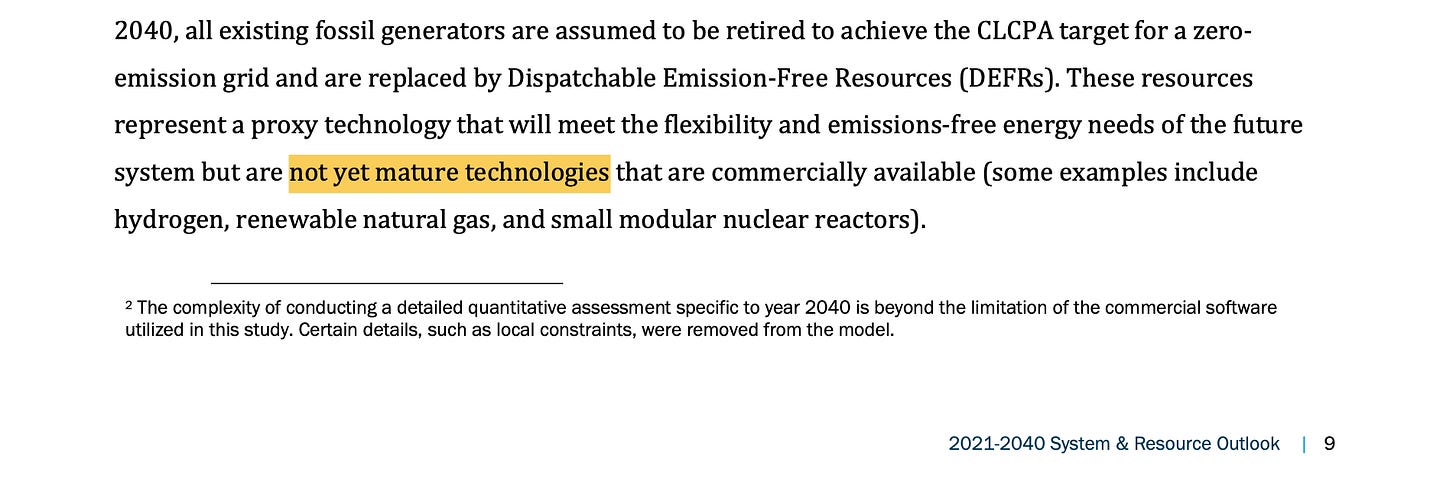In the 1800s Eunice Foote first demonstrated that co2 in air would significantly increase the amount of heat captured from the suns rays [Link].
As someone who enjoys winter, a lack of inundation from climate refugees, and living within my values, I would like to understand my carbon footprint, and hit net-zero well in advance of 2050. Although an Electric Vehicle provides a purchasable answer for transportation, as a renter I have less control of how I heat heat my living space and water, or of my electricity. Short of asking my landlord to put in heat pumps (good luck with that, I hear there’s a shortage even if they did want to drop the money), my best option might be to build or buy in to a free-standing solar installation which can offset natural-gas, oil-based, or coal power generation.
We can see on electricitymaps.com that New York State uses about 75% non-renewables, for an average output of 271 grams CO2 emitted per kWh of energy produced. (Compare to France, which comes in at 66g).
The obvious thing to do would be install solar panels on a rocky field somewhere and sell the power to bring myself net-zero, but there’s some nuance to it. There is a spread in between the price I pay for electricity as a consumer, and what I can sell it for as a producer. This is necessary in order to maintain a distribution network to move that power around, and because that grid must still supply power when people need it (as opposed to only when the sun is up).
The historical way utilities have handled this is with a policy called Net Metering, which looks at your summed monthly power consumption (adding what you take and gave to the grid one-for-one), and charges you the normal kWh rate. This is of course unsustainable: it treats the grid as a free and infinite energy bank for your house, while actually it is neither. Many states and countries having to discontinue their programs (and on doing so cause people to become upset with what is viewed as a slight or a political move).
Selling Power
A 33kW installation in New York State costs about $100k out of pocket, and about ~60% comes back as tax credits when you next file. (Note: kW in this context refers to the DC power rating of all the solar panels added together. A 33kW installation may consist of 127 360W panels).
A small house would use about a 6kW solar installation, a large one would use 2-3x that easily (especially w/ A/C or EV charging). Here’s the economics broken down for net-metering – where the power is used on-site.
New York State has put a great deal of effort in solving the Net Metering problem, in order to allow photovoltaics at scale. They have replaced Net Metering (NEM) with a new pricing model: Value Stack. This is a complex model which bakes in many factors - such region within the state and Renewable Energy Credits (RECs). The above revenue is roughly cut in half with their new model. You can see for yourself with the NYSERDA spreadsheet.
There are ways to improve the economics here - such as installing a 2-axis mount to keep the panels always facing the sun directly, promising a 40% power generation improvement, in return for some (unknown-to-me) maintenance factor.
Finally of course, it possible to sell power wholesale on the electricity auction. This is where the utilities bid in a sort of a dutch-auction to see who can provide power in the coming 5-minute interval for the lowest cost. An additional layer of complexity, called a Capacity auction, allows bids on a further out time-horizon. However, membership costs a good chunk of change ($5k/year IIRC), and the rates one would receive are lower than you get from the Value Stack (aka selling to the distribution network instead of wholesale).
Politics
One thing which has become clear to me doing this research is that it can seem like everyone has something bad to say about whatever power source is not their preference. Photovoltaics are an eye sore, wind turbines kill birds, nuclear waste is dangerous, oil will roast the planet, hydro hurts fish, and so on. And these are generally all true to some degree. Which puts us in the precarious position of trying to rank one person’s needs against another. Fun.
Rather cynically, one could image that photovoltaics have a large amount of federal funding not only because they are renewables which are demonstrating forward progress along the technological-readiness scale, but also because they are one of the least effective at scale; and therefore non-threatening to the status quo. If you’re going to pay for lobbyists, you’ll have them focus on things like nuclear, which really could effectively take oil out of the system, as France has demonstrated for decades.
Federal Tax Credits
That being said, there are a good number of tax incentives for Solar, which makes them a great choice for those paying a lot of Federal income tax. The details are here. In short, you get about 60% of your up-front cost back within a year. Most of that is in the form of Investment Tax Credits, which can be either claimed directly or re-sold to another party. They can even be applied to earnings from the previous year or the 5-6 following years.
One interesting approach here would be to attempt to scale up a solar installation beyond my own personal financial with a wide-scale community action. (If you would be interested in adding capital to a pool here, get in touch. Actual rates of return are TBD, and depend on state and technology used.)
20 Year Plan
NYISO, the company which keeps the New York State utilities talking to one another, has recently published their first (ever!) 20 year plan. It is impressive to see them responding to our growing climate crisis in this way, and you can check out their neat little 20 minute podcast on their new plan.
The most interesting part to me was this stacked bar chart, which shows NY electricity make-up in years to come. Major growth is predicted, due to a switch to electric for EVs and heating.
The last 5 years are notable. Here we see +30 GW in DEFRS, or Dispatchable Emission Free Resources. Or in laymen’s term, big batteries. Dispatchable is the most important part here, as neither solar nor wind fit the bill for on-demand energy. As they note in their report, energy storage technology has yet to be invented at an economically feasible and scalable manner.
We can also see oil (orange) disappearing suddenly in a five year span at the end, which is handled in part by "out-of-state imports”. 🤔
My 2c
I see two actions that make sense as a result here:
Continue researching energy storage. There are many many people working on this, such as thermal energy storage (Matt Ferrell has a good video here), and nano-technologic solutions (such as EnergyX), but the proof will be in the pudding. It would be interesting to explore high-temperature thermovoltaics, which might allow thermal batteries to generate electricity efficiently, not just heat. Perhaps this would be a good subject for a future post.
Nuclear + DAC. It is a pretty damn safe bet to say that we will not get by in a couple decades (or more) without producing any CO2 — many chemical and industrial processes generate CO2. In answer to this, Direct-Air-Capture plants are being developed (Carbon Engineering, ClimeWorks), and in some cases, are already operating on volcano power. These plants absorb carbon from the atmosphere and dump it back in to oil wells as liquid. Pretty damn cool.

Nuclear plants can generate a large amount of power, but cannot be scaled up and down responsively for day-to-day needs of humans depending on the grid. This seems to me like it could be a great match — instead of expensive batteries for DEFR, we perhaps can let DAC have an economic purpose as well as an environmental one by using the excess nuclear power when it is cannot otherwise be used.
Fin
In conclusion, I wish I could get an at-home nuclear reactor + DAC module, but I probably can’t. The DAC price tag is a cool $0.7-1.2B (See Table 3 in the Carbon Engineering paper) so, I will probably stick to solar unless I have some very clever ideas.
That’s all for now. WDYT?
Cheers,
—Peter
F.A.Q.
Does Solar actually save co2, when manufacturing costs (scope 2 emissions) are included?
There’s plenty of rumors going around like “Wind turbines produce more co2 in construction [aka Scope 2 emissions] than they will ever save”, and similar smear on solar and so on. Although there are of course of disadvantages to those two types of renewables, it is not in co2 emission.
Coal 675–1689 gCO2eq/kWh
Oil 510–1170 gCO2eq/kWh
Natural Gas 290–930 gCO2eq/kWh
PV [Solar] 18–180 gCO2eq/kWh # co2 due to manufacture
Nuclear 4–110 gCO2eq/kWh # co2 due to uranium enrichment
Wind 7–56 gCO2eq/kWh # larger turbines = less co2/kWhHere’s the report, with links to studies referenced: 2018 IPCC Report CH7 (see page 539)
How much space will this all take?
The NYSERDA report calls for 200k GWh/year in 2040, with 4-20% covered by utility PV (that is, not on people’s roofs).
200k GWh in 2040 spend * 3 acres / GWh/year * 4-20% = 24k-120k acres covered by solar panels.
In comparison, the state of NY is 35M acres in total —> so 0.06-0.3% of would be NY covered.
Roads on the other hand: 250k lane-miles * 13 feet per lane (standard lane widths are 10 feet, I fudged in another 3 feet for shoulders) = about 400k acres of roads in New York, or about 1% of the state.
New York doesn’t seem to have any oil refineries, but that would make a fun comparison as they do take up a bit of space themselves.
Upshot? Yes it’s a lot, and there may be more space efficient solutions. However, it’s also not an impossible number in comparison to some of our largest infrastructure projects (roads).
What about recycling solar panels?
Glad you asked. Solar panels are mostly glass, and some facilities focused on recycling solar specifically. (Note first however - panels will keep running long after their rated 25 year life span. A friend of my who had panels installed in 1987 had a peak day last year - 34 years later). If you want to see more about recycling, there are many examples on Youtube. I found that Veolia Group had a well made video.
Are we better off putting our Solar in the SW where it is sunny all the time?
On central Solar - there is certainly an argument for that from an efficiency standpoint, as sunny areas can generate a lot more electricity per $ invested (and square foot used). Unfortunately moving that power is what I call a grade-A coordination problem: on the Federal level. As such, it will move at the speed of mud. I enjoyed this blog post / podcast on the subject:
The upshot here is that the Federal Government (FERC) has the power of eminent domain for natural gas pipelines, but not for high voltage lines. This means that the lines need to go through permitting for each state they pass through, in which those states are legally required to only act in their own best interest, likely not in the interest of the line.
For what it’s worth, I have heard of high voltage lines being planned from AU to SG and from Morocco to the UK. Somehow it’s easier internationally, it seems.
P.S. If you like the post, please do subscribe and, if so inclined, share!





















Share this post